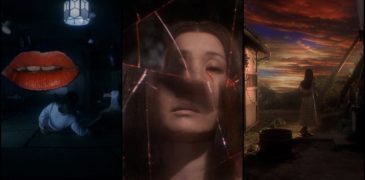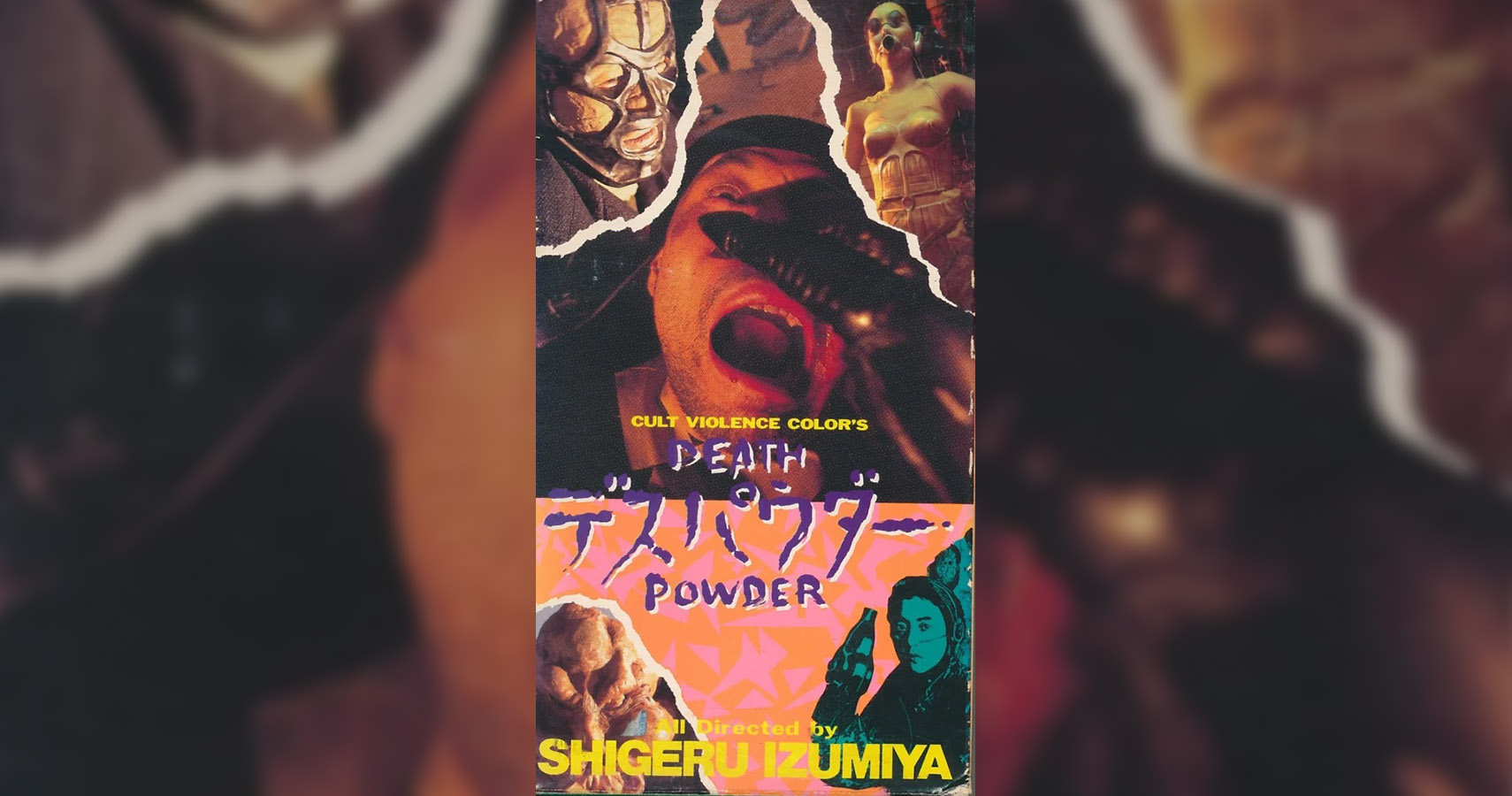
Death Powder is a 1986 Japanese cyberpunk body horror film, written and directed by Shigeru Izumiya. Izumiya is mostly known as a poet/folk singer with a career spanning from the 1970s that is still ongoing, with a huge discography of dozens of albums. Outside of music, Izumiya is a prolific actor who has over 150 credits to his name for both acting and voice acting.
In the near future, three conspirators capture a very special android named Guernica. The group brings her to a deserted warehouse and ties her to a cot, but the android secretes a reality-altering substance that causes the abductors to slowly lose their minds as they hallucinate unspeakable terrors and undergo unnatural transformations.
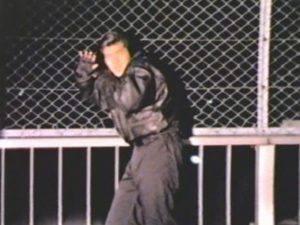
Incredibly experimental in nature, Death Powder is noted as being one of the first Japanese films to explore elements of cyberpunk aesthetics in cinema – predating Katsuhiro Otomo’s anime adaptation of Akira (1988) as well as Shinya Tsukamoto’s Tetsuo: The Iron Man (1989). Although not as widely known as its counterparts, the film is an outstanding representation of the genre that fully embraces its industrial aesthetic with dimly lit environments and gritty textures. This distinct visual style maintains an overall sense of unease and dread. Furthermore, when combined with the film’s use of body horror and special effects, this aspect easily conveys this grim dystopian setting.
Additionally, an atypical approach to cinematography certainly adds to Death Powder’s distinct visual design. Utilising disorientating and unorthodox camerawork throughout, the composition thrusts the audience into a similar discombobulation as the unfortunate protagonists. With shaky Dutch angles, irregular camera positioning, and tight pans are thrown at the viewer at a breakneck pace with few moments of respite.
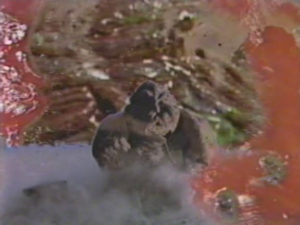
Moreover, the representation of each character hallucinating their own personal hellscape through visual effects further increases this level of disorientation, with psychedelic colour changes and various editing techniques. This distinct visual style, when combined with the film’s cacophony of bewildering sounds that serve as the film’s score, delivers a fever dream of unrelenting disorientation.
Ambiguous by design, the film’s non-linear structure and lack of driven narrative can deliver a perplexing story, mostly serving as a loose framework to deliver its experimental visuals. However, its deliberate pacing allows for an adequate level of suspense to build throughout, delivering scenes thick with tension yet without detail, adding a perplexing and dreamlike quality to the story
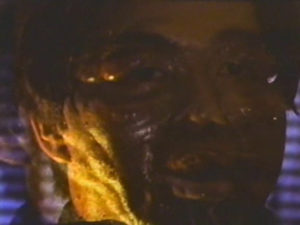
An underrated piece of V-cinema, Death Powder is a must-see for fans of Japanese horror and those seeking a cinematic experience that pushes boundaries and challenges conventional storytelling. Although the film’s composition may be off-putting to some, those able to subvert their inquisitive nature are sure to get the most out of this style of experimental filmmaking.

More Film Reviews
Comedy Horror From the Bottom Shelf Horror Comedy is the beloved sub-genre that brings to mind everything from self-aware zombies to murderous inanimate objects, and the volume of films in… With that title, that font, and that poster, I don’t think there’s any doubt of where this film was going to go. Yes, it is indeed a tongue-in-cheek slasher based in… The Ghost Station is a 2022 South Korean horror thriller, written and directed by Yong-ki Jeong, with additional writing from Soyoung Lee, c, and Koji Shiraishi. Takahashi and Shiraishi are… We previously had the chance to check out Thomas Burke’s short film Camping Fun, a quick dive into a small cult that showed that Burke had the knack to channel… If you’re after a movie that fits the term “cult favourite” like a glove, then look no further than 1982’s The Slumber Party Massacre. It has a brisk runtime, brimming… Nobuhiko Obayashi’s House (1977) is memorable as a haunted house movie that defines itself through a whimsical absurdity forming a reality independent from any conventional filmmaking. It presents a cartoonish…The 6 Levels of Horror Comedy – What NOT to Watch
Totally Killer (2023) Film Review – All Killer, No Filler in this Comedy-Horror Thriller
The Ghost Station (2022) Film Review [FrightFest]
SHC: Freak Accident (2022) Short Film Review – I’m Burning Up!
Slumber Party Massacre (2021) Film Review
House (1977) Film Review – Nobuhiko Obayashi’s Horror Comedy With Family Tones

Hey there, I’m Jim and I’m located in London, UK. I am a Writer and Managing Director here at Grimoire of Horror. A lifelong love of horror and writing has led me down this rabbit hole, allowing me to meet many amazing people and experience some truly original artwork. I specialise in world cinema, manga/graphic novels, and video games but will sometime traverse into the unknown in search of adventure.

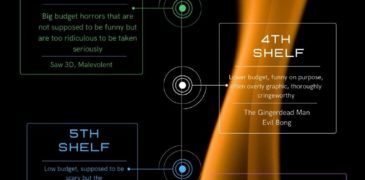

![The Ghost Station (2022) Film Review [FrightFest]](https://www.grimoireofhorror.com/wp-content/uploads/2023/08/The-Ghost-Station10-365x180.jpg)


